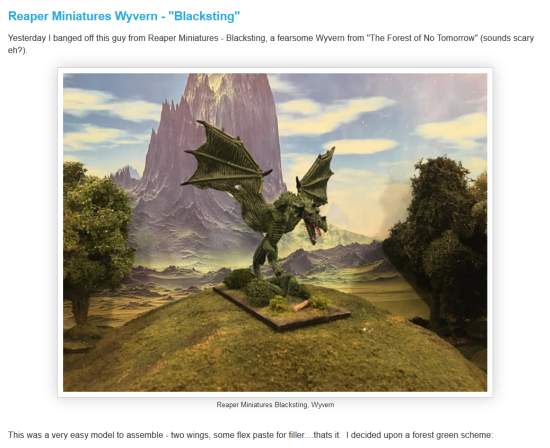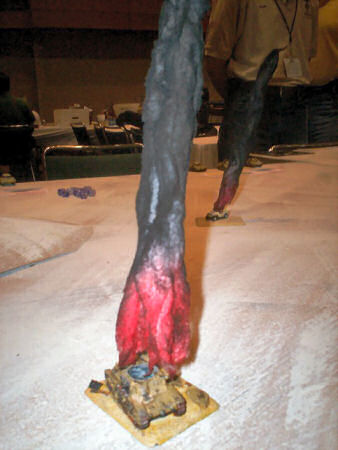At some point between the time I received the model and the time I started painting, I decided that Vallejo's Salmon Rose would be the base color, Andrea Colors Purple (AC-14) and Violet (AC-23) would add variation, and Vallejo's German Gray would be the final color. Prior to inflicting these colors on the miniature, I tested the scheme on an old model part (canvas to a 1/35 scale German staff car, I think). I also tested the way I would apply the paint.

I wanted to avoid doing a lot of highlighting and shading, but I still wanted to get some type of highlighting and shading effect. So I thought I would control the "intensity" (for lack of a better term) of the paint by mixing it with Future floor polish as I painted. My thinking was that the variation in thinned paint would allow the base color to show through in some areas and not in others. I also decided that, in lieu of a regular paintbrush, I would use natural sponge as the applicator.
Alligator clips attached to dowels make handy little tools that I use for lots of different things. In this case, I used the tool to hold the pieces of sponge.
In this next picture, the Salmon basecoat is apparent. The rock that hides the joint area of the tail is clearly visible, and I've noticed something else that will need a bit of attention later on - a crab that wants to avoid having dinner with the Sea Dragon.

The next three pictures show the progression of the painting process. Here's what I'm doing between the pictures:
I place some of the purple paint on my palette. I place a small amount of Future on another part of the palette. I dip the sponge into the Future, and then into the paint. I then blot that mixture on a piece of scrap paper. I watch as I continue to blot the sponge on the paper. Once I notice that I've got the mixture and sponge pattern producing the effect I want, I apply it to the figure.
I wanted the purple patterns to cover everything except the belly of the beast. The violet paint would cover areas a little higher on the sides and top of the model, and the dark gray would cover the top (as well as provide some contrast to the sides of the dragon).
I kept an eye out for any air bubbles that formed, and made sure that I popped those before they had a chance to dry and create little crater areas that wouldn't look right on Dark Sword's nicely detailed dragon.












